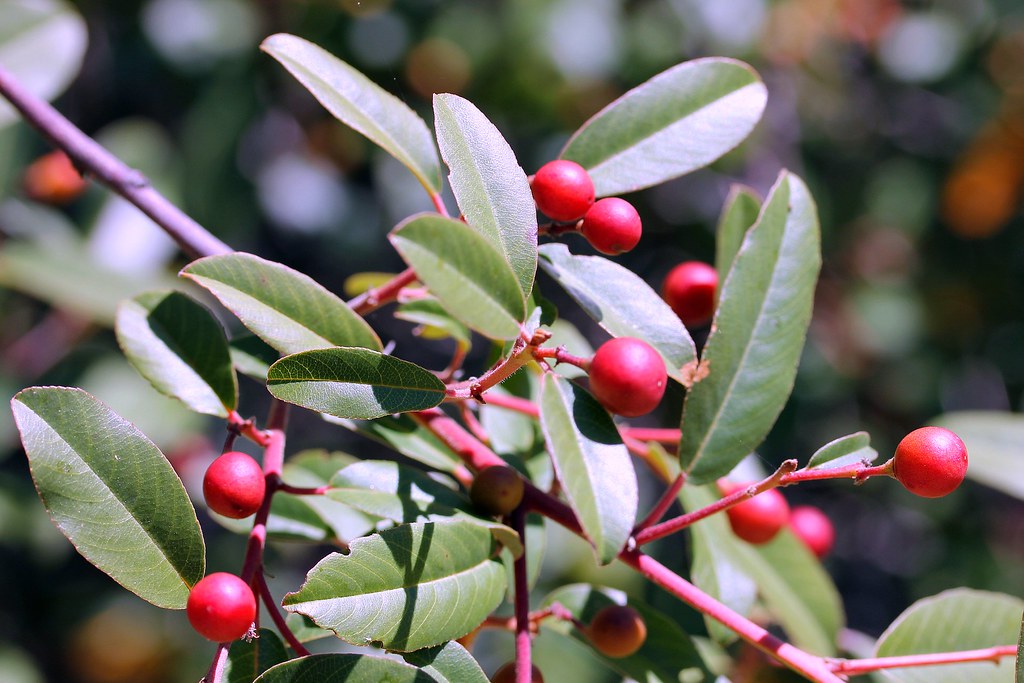How to Grow California Coffeeberry: A Comprehensive Guide

Are you looking for a versatile, low-maintenance shrub to add to your garden? Look no further than the California Coffeeberry (Frangula californica)! This native plant is not only beautiful but also provides numerous benefits to the environment. In this comprehensive guide, we’ll explore everything you need to know about growing and caring for California Coffeeberry.
What is California Coffeeberry?
California Coffeeberry, also known as California Buckthorn, is an evergreen shrub native to the western United States, primarily found in California, Oregon, and Arizona. It belongs to the Rhamnaceae family and can grow up to 15 feet tall and wide, although it typically reaches a more modest size of 6-8 feet.
The plant features glossy, dark green leaves that are 1-3 inches long and have smooth edges. In the spring, small, inconspicuous flowers bloom, followed by berries that start green and turn red and then black as they mature. These berries are a favorite among birds and other wildlife.
Why Grow California Coffeeberry?
There are many reasons to consider adding California Coffeeberry to your garden:
- Low-maintenance: Once established, California Coffeeberry is drought-tolerant and requires minimal care.
- Versatile: It can be used as a hedge, screen, or background plant, and it tolerates a range of soil types and sun exposures.
- Attractive: The glossy leaves and colorful berries add visual interest to the landscape throughout the year.
- Wildlife-friendly: The berries attract a variety of birds, and the dense foliage provides shelter for small animals.
- Eco-friendly: As a native plant, California Coffeeberry is well-adapted to the local climate and supports the ecosystem.
How to Grow California Coffeeberry
Planting
The best time to plant California Coffeeberry is in the fall or early spring, although it can be planted year-round in mild climates. Choose a location with well-draining soil and full sun to partial shade. Dig a hole twice as wide as the root ball and just as deep. Remove the plant from its container, loosen the roots, and place it in the hole. Backfill with soil and water thoroughly.
Watering
California Coffeeberry is drought-tolerant once established, but it needs regular watering during its first year. Water deeply and infrequently, allowing the soil to dry out between waterings. After the first year, the plant can survive on rainfall alone in most areas, but it may need occasional supplemental watering during prolonged dry spells.
Fertilizing
California Coffeeberry does not require regular fertilization. If desired, you can apply a slow-release, balanced fertilizer in the spring, following the package instructions.
Pruning
Pruning is not necessary for California Coffeeberry, but it can be shaped or trimmed to maintain its desired size and form. The best time to prune is after the plant has finished fruiting, typically in late summer or early fall.
Pests and Diseases
California Coffeeberry is relatively resistant to pests and diseases. However, it can occasionally be affected by scale insects, aphids, or powdery mildew. These problems can usually be controlled with horticultural oils, insecticidal soaps, or fungicides.
Propagating California Coffeeberry
California Coffeeberry can be propagated by seed or cuttings. To propagate by seed, collect the berries in the fall and remove the pulp. Sow the seeds in a well-draining seed-starting mix and keep them moist until germination occurs, which can take several months.
To propagate by cuttings, take 4-6 inch stem cuttings in the summer and remove the lower leaves. Dip the cut end in rooting hormone and plant in a well-draining potting mix. Keep the cuttings moist and in a warm, shaded location until they develop roots, which can take several weeks.
Using California Coffeeberry in the Landscape
California Coffeeberry is a versatile plant that can be used in a variety of landscape settings. Here are a few ideas:
- Hedges and Screens: Plant California Coffeeberry in a row to create a dense, evergreen hedge or screen for privacy or to define areas of the garden.
- Background Plantings: Use it as a backdrop for smaller, colorful plants or to fill in gaps in the landscape.
- Slopes and Erosion Control: The deep roots of California Coffeeberry help stabilize soil on slopes and prevent erosion.
- Wildlife Gardens: Include it in a native plant garden or wildlife habitat to provide food and shelter for birds and other animals.
Companion Plants
California Coffeeberry pairs well with other native plants, such as:
- Ceanothus (California Lilac)
- Manzanita (Arctostaphylos)
- Sage (Salvia)
- Toyon (Heteromeles arbutifolia)
- Yarrow (Achillea millefolium)
Frequently Asked Questions
Is California Coffeeberry edible?
While the berries are not toxic, they are not considered edible for humans. They are bitter and can cause digestive upset if consumed in large quantities.
How fast does California Coffeeberry grow?
California Coffeeberry has a moderate growth rate, typically growing 6-12 inches per year.
Can California Coffeeberry be grown in containers?
Yes, California Coffeeberry can be grown in large containers with well-draining potting mix. Be sure to water more frequently than in-ground plants.
Is California Coffeeberry fire-resistant?
Yes, California Coffeeberry is considered fire-resistant due to its deep roots and ability to resprout after a fire.
How long does California Coffeeberry live?
With proper care, California Coffeeberry can live for several decades in the landscape.
Conclusion
California Coffeeberry is a beautiful, low-maintenance, and eco-friendly addition to any garden. By following the planting and care guidelines outlined in this comprehensive guide, you can successfully grow this versatile shrub and enjoy its many benefits for years to come. Whether used as a hedge, screen, or background plant, California Coffeeberry is sure to enhance your landscape while providing valuable resources for local wildlife.





